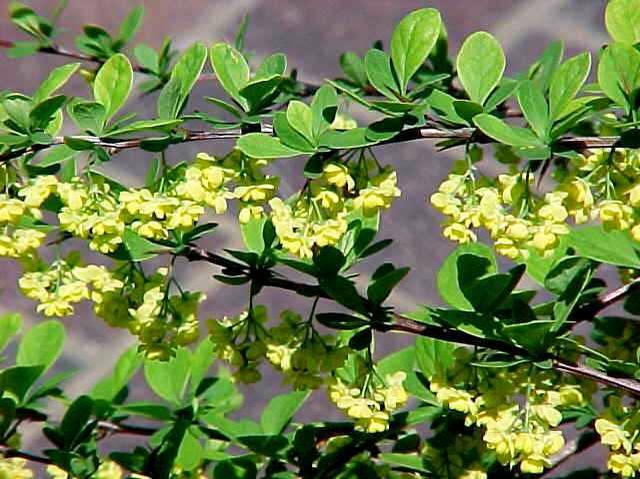Japanese barberry (Berberis ‘Tara’ EMERALD CAROUSEL)
Japanese barberry
Berberis is a genus of about 450 species of evergreen or deciduous shrubs from all parts of the North Hemisphere as well as North and tropical Africa and South America.
Genus name comes from the Latinized form of the Arabian name for the fruit.
‘Tara’, commonly sold as EMERALD CAROUSEL, is a cross between B. thunbergii and B. koreana, exhibiting the broad, rounded habit of the former and excellent winter hardiness of the latter. A fast-growing, deciduous, multi-stemmed, rounded shrub which typically grows 3-5′ tall and as wide. Stems have sharp thorns. Features variably sized leaves (1/2″ to 2″ long) which emerge yellowish in spring, mature to dark green in summer and turn red in fall. Tiny, yellowish flowers appear from late April to early May in short racemes along the stems. Glossy, bright red berries form in the fall and often last into the winter well after leaf drop.

Easily grown in average, dry to medium, well-drained soil in full sun. Tolerates light shade, but needs full sun to develop best foliage color. Very adaptable shrub that is tolerant of many pollutants in urban areas. Tolerates drought, but will not perform well in poorly drained, wet soils.
| Hardiness zone | 4 - 7 |
| Sun light | Full sun |
| Water | Dry to medium |
| Maintenance | Low |
No serious insect or disease problems. Like most barberries, this plant tends to trap wind-blown litter.
Informal hedge, barrier plant, foundation plant, shrub border.
| Common name | Japanese barberry |
| Botanical name | Berberis 'Tara' EMERALD CAROUSEL |
| Plant type | Deciduous shrub |
| Family | Berberidaceae |
| Hardiness zone | 4 - 7 |
| Water | Dry to medium |
| Maintenance | Low |
| Flower color | Yellow |
| Flowering period | April - May |
| Height | 3 - 5 ft. |
| Width | 3 - 5 ft. |